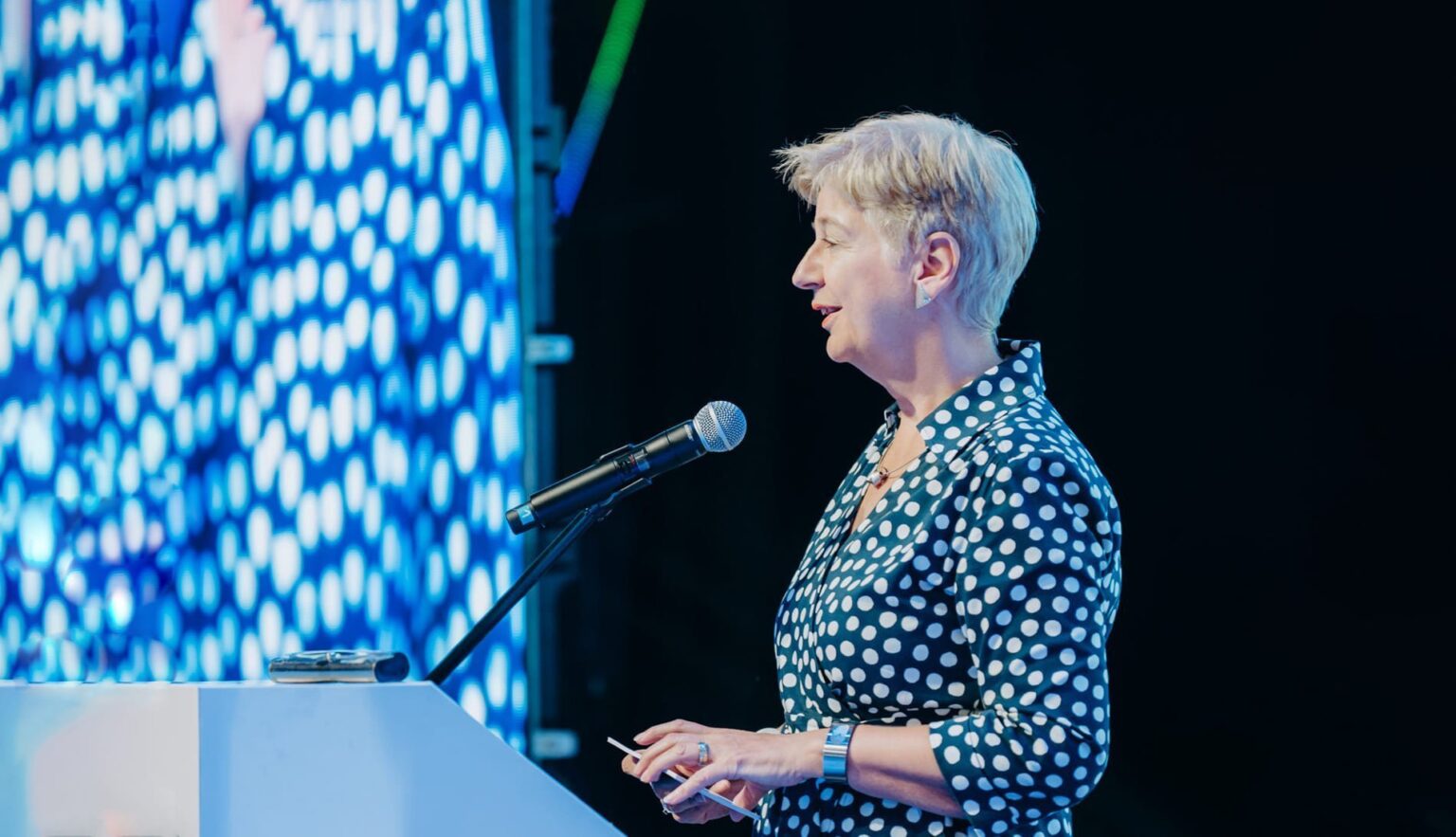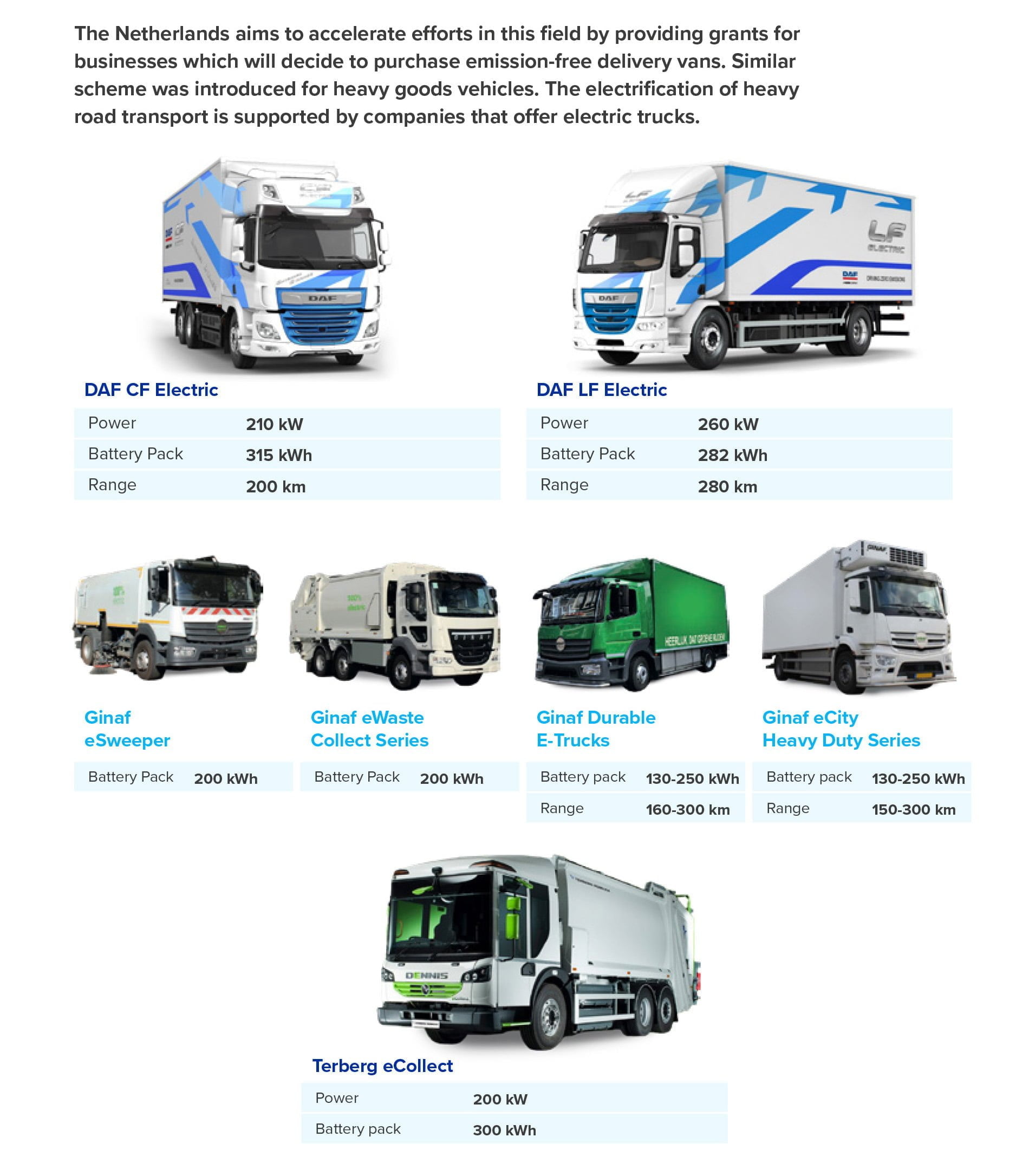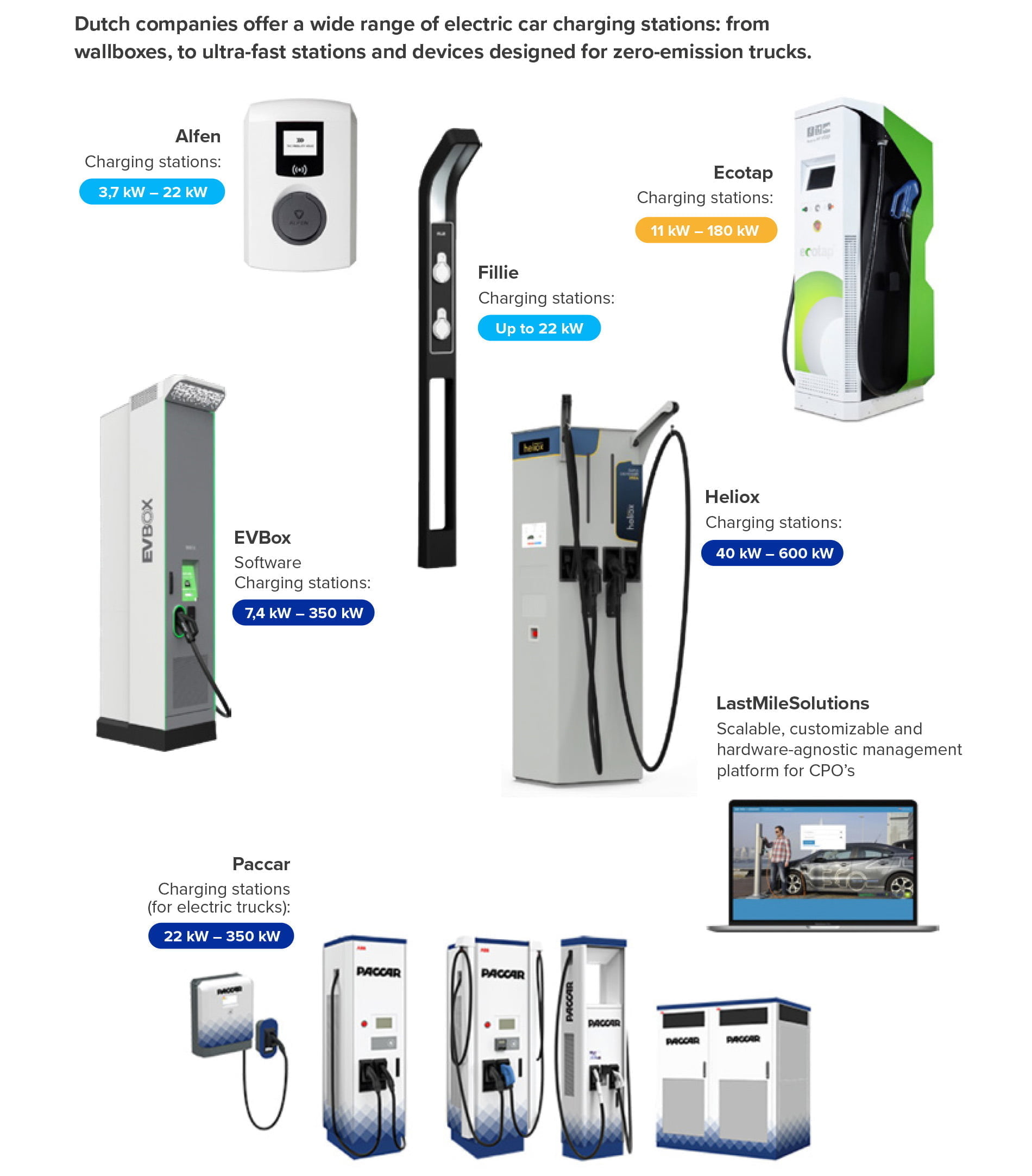Madam Ambassador, you represent the absolute European Union leader in electromobility. This can be seen, for example, in the number of charging stations.
Just in terms of EV charging stations in the Kingdom of the Netherlands, there now over 90 000, while we have not yet crossed the threshold of 2 500 in Poland. (According to the Electromobility Meter, there were 2565 charging stations in Poland at the end of December 2022 – przyp. red.).
What is the recipe for such a success? What support mechanisms were implemented by the Dutch Government to enforce this progress? Was this support based on grants, tax preference, deductions?
Seven out of ten Dutch households on average rely on public parking or parking garages. This makes a reliable and dense public charging network essential for e-mobility adoption in the Netherlands. The Dutch roll-out strategy for public charging infrastructure has evolved over the last decade. Municipalities have increased their collaboration, working together in regional concessions for public charging infrastructure. This approach has enabled new public charging infrastructure to be rolled out with little or no additional government investment. This is all under the flag of the National Charging Infrastructure Agenda, a collaboration between different levels of governments, companies, knowledge institutions and branch organizations.
What is the current state of development of the heavy duty transport sector in the Netherlands?
Logistic transport is an important cornerstone of Dutch economy and society. Accumulated, the logistics fleet consists of approximately 140,000 trucks. That is only 1% of all road vehicles, but they responsible for 19% of CO2-emissions of road vehicles. Currently, about 0.2% of heavy duty transport vehicles is zero-emission; the majority runs on diesel. More and more logistics companies are considering the transition to electric fleets.
What are the barriers and the boosters of the Dutch heavy duty transport sector?
The logistics sector can play a significant role in reducing climate change emissions and increasing air quality in cities. The Dutch government is stimulating the electrification of delivery vans and trucks by developing 30-40 zero emission zones for city distribution in major Dutch cities only accessible with zero emission vehicles. By 2030 an expected amount of 250.000 delivery vans and 16.000 trucks will be electrified to enable zero emission city logistics. Charging logistical vehicles requires much more concentrated infrastructure on business and industry parks with higher power requirements and has major grid impacts. The current electricity grid is reaching its capacity limits and the global availability of zero-emission heavy duty transport vehicles is still relatively low.
Are the logistic companies in the Netherlands fully prepared for the powertrain transition?
The logistic companies are preparing very well, but they also have several concerns, which we take very seriously. They are worried about the grid capacity and the availability of sufficient charging capacity in the right locations and the right time. Another concern is the high capital costs of the zero-emission trucks, especially for small and medium enterprises. As government, we aim at overcoming these barriers by means of subsidies, and a fast roll-out of grid uptake and charging infrastructure based on a long-term forecasts for needed grid capacity.
How can we accelerate the transition of the heavy transport industry and do you assess the completion of this process by 2040 as feasible?
There are several ways to accelerate the transition, but I am convinced that it all starts with ambitions. The Netherlands and CALSTART have launched a Global Memorandum of Understanding on Zero-Emission Medium and Heavy Duty Vehicles that aligns leading nations around the ambition of 30% zero-emission sales of trucks and buses in 2030 and 100% in 2040. As per November 2022, an economically and geographically diverse group of countries have signed for this ambition. I truly hope that we can soon welcome more Polish public and private partners to this group. The Global MOU is endorsed by over 70 sub-national governments and industry partners, including major vehicle manufacturers and branch organizations. Endorsements give a strong signal to the market and I would therefore invite all Polish players involved in medium and heavy duty vehicles segment to join the Global MOU through the Global Drive to Zero campaign. I am convinced that polluting truck models are on their way out and that policy-making is moving towards their exit by 2040. Studies show that the Total Cost of Ownership of the largest zero-emission trucks are lower than those of the diesel variant by approximately 2035. And for many smaller vehicles that tipping point will be much sooner. Vehicle range is rising, while battery prices and the use of scarce materials are decreasing.
Hydrogen or electric powertrains? Do applications vary in the context of passenger vehicles and heavy duty vehicles?
Fuel cell electric vehicles (hydrogen) and battery electric vehicles are both developing quickly and can be used for different matters. I believe they can complement each other. We are supporting both applications in terms of, amongst others, subsidies and the roll-out of charging and hydrogen tanking infrastructure.
Does the Kingdom of the Netherlands have an existing EV charging infrastructure for heavy duty vehicles? What is the strategy for this segment?
Our forecasts show that 2035 we most likely need almost 48.000 charging points for heavy duty vehicles (almost 3 Gigawatt). The majority (ca. 80%) will be located at private depots. To be ready in time, we have strategy consisting of several steps. We are currently making forecasts of what is when and where needed to charge heavy duty vehicles in the future. The next step is to develop and demonstrate scalable best practices. Wet translate the forecasts into visions and actions with all relevant stakeholders, such as sub-national governments. This leads to a basic network for logistic parties who deliver in the zero-emission zones. That will grow into the development of fast charging facilities along the main corridors aligning the EU-ambitions for a well-covered network. Once that is established, we will be able to fulfil the distribution of a charging infrastructure network throughout the Netherlands.
We have the ICE phase-out in 2035 in the EU, also the approaching implementation of AFRI, EPBD and other significant law. What can the EU do more, to further drive the decarbonization of Europe and transport in particular?
There are many steps the EU can take, but I would like to point out a very important and relevant piece of legislation. The European Commission currently works on the revision of the CO2-standards. We urge the European Commission and the member states to work on a 100% zero-emission target in 2035 for new heavy duty vehicles in line with the EU objective of climate neutrality by 2050. This should be supported by a strengthened 2030 target, that builds on the ambitions expressed by frontrunning OEMs and fleet owners. And we also believe that the CO2-standards should be applicable to more vehicle categories as covered under the current scope. The current CO2 reduction targets are only applicable to a small share of freight vehicles on the road, leaving almost 35% of emissions out of scope.
Thank you for the interview,
Aleksander Rajch
The Netherlands - an electromobility powerhouse
The Netherlands has the largest infrastructure dedicated to BEVs in the EU. Electric car users in the country have as many chargers as all 23 member states combined. The European leader currently has more than one hundred thousand charging points. The total number of chargers in the Netherlands is as high as 108,908 (as of October 2022). There are 3 157 fast charging stations, 39 721 semi-public stations with limited access and 66 030 public stations open seven days a week (24 hours).
The Netherlands is not only about electric cars. More and more light vehicles are using the roads and cycle paths which increases the usage of charging points. Bicycles account for the most often used light vehicle – around 23 million, including more than three million electric bicycles. More innovative light electric vehicles (LEVs) are also being introduced, including e-scooters and various types of cargo and luggage bikes. These new vehicles have the potential to help society achieve some of its goals related to accessibility, recreation and sustainability, provided their technical safety and use on the roads are properly guaranteed.
The Netherlands is an important transport hub. However, heavy road transport also causes significant pollution. In fact, it accounts for more than a third of carbon dioxide emissions and 70% of nitrogen oxides emissions from all road transport. The state authorities want all road transport to be zero-emission by 2050. This is set out in the national climate agreement. To achieve this, all new cars will have to be emission free by around 2030 and all heavy transport by around 2040.
Source: ACEA, nederlandelektrisch.nl



